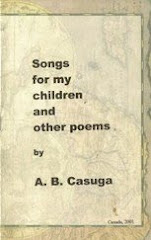TRANSFIGURATIONS: IS BEAUTY AN OMEN?
A condition of complete simplicity/ (Costing not less than everything)---Little Gidding, The Four Quartets, T.S.Eliot
Cocooned in a condition of utter simplicity,
the silkworm will not stop oozing out its tapestry
onto the point of death which is also its beauty.
How much beauty can be eked out of pain?
Like the hurt bivalved flesh of the grimy oyster,
would the papillon wings glisten like a pearl?
But this one is spun out of patience: there
must be radiance out of a cocoon’s dark
confines. It can only break into mobile light.
Colour the mariposa green, would that matter?
Dye the silk out of its consumed gossamer nets,
would that stop its flying out of a crude beginning?
Arrested from its final transfiguration, the worm
turns and it is on a table–the grub of culinary
quintessence! Quite like an earlier challenge:
“Eat of my flesh, drink of my blood. This covenant
shall not be broken. I will be with you again when
the radiance of this goblet dims into a eucharist.”
A condition of simplicity? Bear beauty and perish?
Offer an unending dream in a kingdom, and be slain?
The tale of the supreme sacrifice is also immolation.
What does it matter that I die then, if I flew out
of a trellis like the monarch butterfly, that started
as a wormed-out silkworm then food for the hungry?
I would be the worm, the injured mother pearl,
the crucified madman who asked that his flesh
be eaten, his blood quaffed, and live forever.
Beauty is an omen. Destroy this vessel of clay,
and it can only spill the reddest of wine, the
stoutest of ale: a dangerous promise of eternal life.
—ALBERT B. CASUGA


























